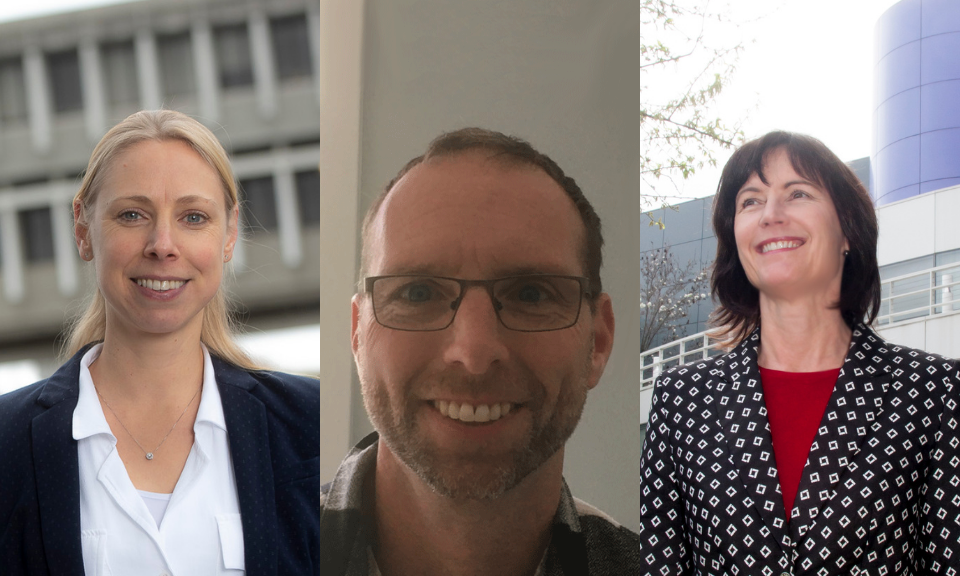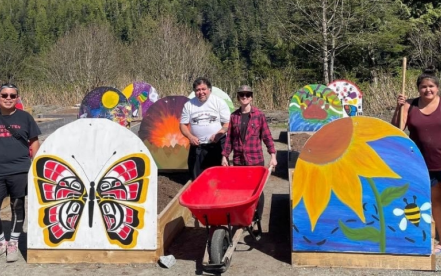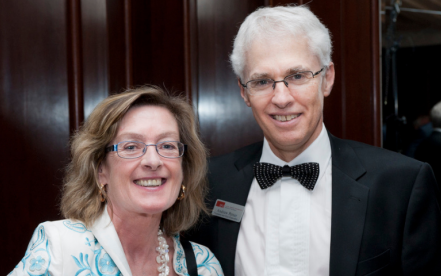SFU researchers on navigating the future of work

In just a matter of weeks, the COVID-19 pandemic profoundly changed the way we work. Millions of people experienced an accelerated shift to remote work as offices closed, others provided essential in-person services under new protocols and rules; countless more were furloughed or permanently lost their jobs.
The ability to pivot in the face of unrelenting disruption and adapt to an unprecedented pace of change has become, as IBM puts it, a “mandatory business competency” for business leaders. As we turn to an uncertain future, what might our workplaces look like and how can organizations ensure that teams can continue to collaborate, innovate and navigate a way forward?
Researchers at Simon Fraser University’s Beedie School of Business have been investigating these very questions. With the generous support of funds endowed primarily by the Beedie family as well as other members of the SFU community, Lieke ten Brummelhuis, Chris Zatzick and Terri Griffith have been studying a wide range of organizational issues—from workaholism and employee mobility, to negotiating change and prospering in dynamic times. Now, they are also considering some of the pandemic’s most significant impacts on the future of work.
On employee well-being and recovery
What’s the difference between long work hours and being a workaholic? Behaviour versus mentality, says Lieke ten Brummelhuis, an associate professor in management and organization studies at SFU Beedie.
According to a study that Ten Brummelhuis conducted in partnership with a Dutch consulting firm, working long hours is a behaviour, while workaholism is a compulsive mentality where one struggles to psychologically detach from work. Working long hours does not necessarily have to be unhealthy if one is able to switch off and unwind after work. Workaholism, however, can lead to harmful health implications such as elevated blood pressure and cholesterol, cardiovascular disease and diabetes, the study finds.
For those who were already prone to work addiction, the monumental shift to working from home during the pandemic has caused the lines between work and life to become increasingly more blurred.
“The tricky thing about working from home is that it’s never enough,” says Ten Brummelhuis, who currently holds a Beedie Family Professorship. “You’re obliged to show you’re always working, but when your office is the living room, what are the boundaries?”
In a recent paper published in the Journal of Vocational Behavior, she and her co-investigators looked at how constant connectivity affects work performance. They found that increased connectivity led to unwanted interruptions, such as the pressure to respond immediately to incoming emails, which in turn diminished feelings of autonomy.
Assuming that many people will now be working in a hybrid model that combines working at the office and at home, leaders need to ensure that their employees have time in the day to devote to their tasks and to engage in activities that allow for relaxation and replenishment, says Ten Brummelhuis. Earlier this year, Citi announced Zoom-free Fridays, while Hootsuite plans to shut down the entire company for a full week in July to “unplug” together and forgo the collective need to check notifications.
“Organizations need to think of employees as assets they need to take care of,” says Ten Brummelhuis. “People need to detach from work and do other rewarding things that they truly enjoy, so they are excited and energized to start again the next morning.”
To top off a busy year of being featured in media such as CityNews and Vancouver Sun, delivering a talk as part of SFU’s 2021 President’s Faculty Lectures, coordinating a complex data collection project funded by a SSHRC Partnership Engage grant, and publishing two articles in prestigious peer-reviewed academic journals, Ten Brummelhuis is now working on a forthcoming paper that considers possible healthy ways to working long hours. Her secret to productivity, she says, is her professorship.
“I owe it to donors like the Beedie Family for being able to spend a lot of time on my research,” Ten Brummelhuis says. “Their support is critical to my ability to publish and to advancing the research community.”
On employee mobility and dynamic organizational rules
As workplaces shift and we enter the next phase of work, experts warn of a “looming resignation boom”—that is, employees who have been contemplating an exit from the workforce for a variety of reasons, whether it’s because of burnout, the desire to reskill or change careers, or to take care of dependent family members.
“During the pandemic, we saw lots of people stay in their jobs because they were happy to still be employed,” says Chris Zatzick, who studies talent acquisition and how and when companies can hire the best employees. “Once things open up, companies that don’t allow employees to feel a sense of control, such as job flexibility or the ability to experiment with new ways of doing work, will likely face more resignations.”
One area that Zatzick, whose professorship is funded by an endowment from the collective support of several donors, has been particularly interested in is the post-employment relationship. When employees do resign, how a company treats them while they are there and after they leave is very important, he says. He points to Glassdoor, where former and current employees can post reviews on their companies that may influence their brand reputation, as well as sway the outlook of prospective talent who are contemplating a role with the company. Wayfund, which was created by former and current Wayfair employees to support start-ups founded by Wayfair alumni, shows what a big part the company has played in their lives. Finally, boomerang employees—those who return to a company after a stint elsewhere—can return possessing more knowledge and value than when they left.
According to a recent paper that Zatzick co-authored, dynamic organizational rules are critical to prospering in uncertain times and providing a satisfactory employee experience. In this model, upper management are collaborative facilitators rather than rule makers, working together with employees to co-create new policies and modify work requirements.
The study also looked at Valve, a software company that considered implementing an overtime ban to assist with employee work-life balance. When they consulted employees to better understand the issue, they realized that imposing a ban would cause employees to hide what they were doing just to meet important deadlines. As a result, they collaborated with employees to monitor how much overtime was being worked, and when this would indicate a fundamental failure in planning that needed to be addressed.
“As employees contribute to the design and development of policies, they will be more likely to buy in and follow the rules they had input on,” says Zatzick. “These employees tend to be more satisfied and committed to an organization, even if they leave for another job. Who knows, they may return in the future.”
On automation and upskilling
For more than 30 years, Terri Griffith has been researching how people think about and use technology and other innovations so they can learn to work in better ways. Then came the pandemic, which drastically changed how people did their work in just a matter of days.
As the Keith Beedie Chair in Innovation and Entrepreneurship, Griffith has been looking at ways to address the “talent gap” in the ways we think about our work. Her current research focuses on “bottom-up” automation approaches, where workers are encouraged to mix existing and new capabilities on their own.
While we saw initial adjustments to the way we worked at the onset of the pandemic, Griffith observed that the pace of change has reverted to the low pre-pandemic rates soon after. “People are always saying ‘the robots are going to take our jobs’, and they will if we don’t think about ways to add automation on our own,” she says.
Thanks to the funding and support of the Beedie family, Griffith will be taking on two undergraduate research assistants to look at how thinking in 5T—target, talent, technology, technique and times—helps people innovate in their own work. They will be using machine learning to evaluate sentiments in the comments section of newspaper articles, including attempting to prove their hypothesis that people who show more interdisciplinary thinking in 5T exhibit more positive mindsets and perspectives on the future.
The data collection will focus on two points in time—right at the start of lockdowns when employees shifted to remote work, and now as companies are planning for a return to office or hybrid work model.
“Research shows that people who make individual adjustments to their work have higher performance, and this leads to increased engagement and positive outcomes,” says Griffith. “Leaders need to think more about how to support people in designing their own work, especially when they have to quickly pivot and work in new ways.”


